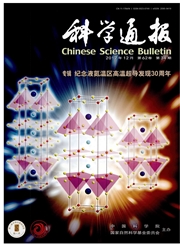

 中文摘要:
中文摘要:
磺胺类抗生素(SAs)是水环境中普遍存在的新型污染物,光降解是其在表层水体中的重要消减途径,而SAs不同解离形态的光化学转化却鲜有报道.本研究以磺胺二甲基嘧啶(SMZ)为模型化合物,考察了3种解离形态与羟基自由基(·OH)、单线态氧(^1O2)的光氧化反应动力学,比较了活性氧物种(ROS)光氧化和直接光解的产物、途径,评估了相应的环境归宿和贡献.竞争动力学实验结果表明,3种解离形态SMZ与ROS的光氧化反应活性不同,由阳离子态到阴离子态依次增强,并且不同解离形态SMZ与^1O2的反应活性具有数量级的差别.在天然水p H6.0~9.0范围内,SMZ与·OH反应的最小环境半减期为21.17~32.12 h,^1O2反应的最小环境半减期为0.06~1.06 h.相对于直接光解和·OH氧化反应,SMZ的^1O2氧化对其为表层水体中光化学归趋作用最大.通过固相萃取(SPE)富集及Agilent 6410B三重串联四极杆液质联用仪(LC-MS-MS)分析,鉴定了SMZ与ROS反应的主要产物.^1O2氧化、·OH氧化及直接光解反应生成了不同的产物,表现为不同的反应途径.^1O2氧化产物较为单一,而·OH氧化产物较为丰富,主要为4种不同位置的羟基化产物.以上结果对于深入理解表层水体中该类抗生素污染物不同解离形态的复合光化学行为具有重要意义.
 英文摘要:
英文摘要:
Sulfonamide antibiotics(SAs) are emerging pollutants that are ubiquitous in the aqueous environment. They are of acute concern as their pseudo-persistence and many of them can induce environmental bacterial resistance. The molecular structures of the antibiotics contain both ionizable groups and heteroatoms. Theoretically, they can undergo acid-base dissociation and exist in different dissociation forms in the aqueous environment. Photochemical degradation has been proved to be a significant elimination pathway of SAs in sunlit natural waters. However, the environmental behavior of the antibiotics in different dissociation forms is still unclear, especially for their photooxidation by the reactive oxygen species(ROS). Therefore, in this study, sulfamethazine(SMZ) was adopted as a case to study the photooxidation kinetics of individual dissociation forms with hydroxyl radicals(·OH) and singlet oxygens(^1O2), and to investigate the corresponding intermediates and environmental fate. Competition kinetic experiments and matrix calculations were performed to determine the second order reaction rate constants of the dissociation forms with ·OH and 1O2. The results indicated that their bimolecular rate constants for the reaction between SMZ and ROS increased with the increasing matrix p H. The three SMZ dissociation forms showed different ROS photooxidation activities, which was enhanced from cationic states to anionic states. The reaction activities in different dissociation forms with ^1O2 varied by orders of magnitude, and the anionic states were most easily to be oxidized by ^1O2. In the normal p H range of natural waters(6.0-9.0), the corresponding environmental half-lives of SMZ were calculated to be 21.17-32.12 h for ·OH oxidation and 0.06-1.06 h for 1O2 oxidation, respectively. Compared with direct photolysis and ·OH oxidation, ^1O2 oxidation may be a central factor in determining the environmental photochemical fate in sunlit surface waters. Furthermore, the main photooxidation produ
 同期刊论文项目
同期刊论文项目
 同项目期刊论文
同项目期刊论文
 期刊信息
期刊信息
